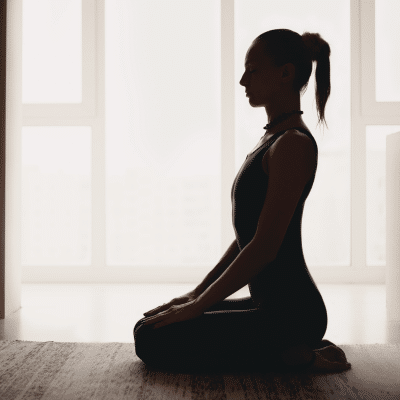
Goddess Pose (Utkata Konasana)
Goddess Pose is a powerful yoga posture that strengthens the pelvic floor muscles while engaging the inner thighs, hips, and core. To practice Goddess Pose:
- Begin standing with feet wide apart, toes turned out at a 45-degree angle.
- Inhale as you bend your knees, lowering into a deep squat position.
- Keep your spine tall and pelvis neutral, engaging the pelvic floor muscles.
- Bring your palms together at heart center, pressing elbows against inner thighs.
- Hold the pose for 5-10 deep breaths, then slowly straighten your legs to come out of the pose.
Goddess Pose helps improve pelvic floor tone and stability while promoting hip flexibility and strength.
Bridge Pose (Setu Bandhasana)
Bridge Pose is a gentle backbend that targets the pelvic floor muscles, glutes, and hamstrings. To practice Bridge Pose:
- Lie on your back with knees bent and feet hip-width apart, arms resting alongside your body.
- Inhale as you press through your heels, lifting your hips towards the ceiling.
- Engage your pelvic floor muscles and inner thighs, keeping your knees in line with your ankles.
- Press your shoulders and upper arms into the mat to lift your chest towards your chin.
- Hold the pose for 5-10 breaths, then slowly lower your hips back down to the mat.
Bridge Pose helps improve pelvic floor strength and flexibility while relieving tension in the lower back and hips.
Cat-Cow Pose (Marjaryasana-Bitilasana)
Cat-Cow Pose is a gentle flowing sequence that stretches and strengthens the spine, pelvis, and pelvic floor muscles. To practice Cat-Cow Pose:
- Begin on your hands and knees in a tabletop position, wrists aligned under shoulders and knees under hips.
- Inhale as you arch your back, dropping your belly towards the mat and lifting your head and tailbone towards the ceiling (Cow Pose).
- In Cat Pose, exhale as you round your spine, tuck your chin to your chest, and draw your belly button towards your spine.
- Continue flowing between Cow Pose and Cat Pose with each inhale and exhale, moving mindfully with the breath.
Cat-Cow Pose helps improve pelvic floor awareness, mobility, and circulation while promoting spinal health and alignment.
Malasana (Garland Pose)
Malasana, also known as Garland Pose or Yogi Squat, is a deep squatting posture that engages the pelvic floor muscles and stretches the hips and groin. To practice Malasana:
- Stand with feet wider than hip-width apart, toes turned slightly outwards.
- Lower your hips towards the ground, coming into a deep squat position.
- Bring your palms together at heart center, using your elbows to gently press your knees open.
- Keep your spine tall and pelvis neutral, engaging your pelvic floor muscles.
- Hold the pose for 5-10 breaths, then slowly rise back up to standing.
Malasana helps strengthen the pelvic floor muscles, improve hip flexibility, and relieve tension in the lower back and hips.
Reclining Bound Angle Pose (Supta Baddha Konasana)
Reclining Bound Angle Pose is a relaxing and restorative posture that gently opens the hips and groin while engaging the pelvic floor muscles. To practice Reclining Bound Angle Pose:
- Lie on your back with knees bent and feet flat on the mat, hip-width apart.
- Exhale as you allow your knees to fall open towards the sides, bringing the soles of your feet together.
- Support your outer thighs with blocks or pillows if needed to prevent strain.
- Rest your hands on your belly or extend your arms alongside your body with palms facing up.
- Close your eyes and relax into the pose, focusing on deep, diaphragmatic breathing.
Reclining Bound Angle Pose helps release tension in the pelvic floor muscles, promote relaxation, and improve circulation to the pelvic area.
Request an Appointment Today
Yoga offers a powerful and accessible way for women to improve pelvic floor health and overall well-being. By incorporating these five yoga poses into your regular practice, you can strengthen, stretch, and support the pelvic floor muscles while promoting balance, flexibility, and relaxation. At New River Women’s Health, we’re committed to empowering women with holistic approaches to pelvic floor health and women’s wellness. If you have questions or concerns about pelvic floor health or would like to explore yoga as part of your wellness journey, request an appointment today!

